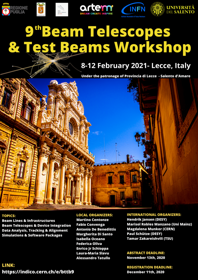Speaker
Description
The main goal of the FOOT (FragmentatiOn Of Target) experiment is the measurement of the differential cross sections of the fragments produced by the nuclear interaction of the incident light ion beam (proton, Helium, Carbon, ...) with different targets (proton, Carbon, Oxygen, ...). Depending on the beam energy, the purpose of the measurements is twofold: in the $[150-400]$ MeV/u range, the data will be used to evaluate the modification of the dose-depth profile in a hadrontherapy treatment, while in the $[700-1000]$ MeV/u range it will be used to optimize the shielding of spaceships for long term missions in deep space.
The FOOT electronic setup is composed by several detectors devoted to the measure of kinematic quantities of the produced fragments.
In order to characterise in the best way the performance of every detector, a intense test-beam campaign has been carried out since two years together with other tests and data taking foreseen in the next future.
Among FOOT detectors, a crucial role is played by the $\Delta E$-TOF (Time of Flight) detector, composed by two layers of plastic scintillator bars. It contributes to the particle identification by providing the velocity $\beta$ of the crossing fragments and their atomic number $Z$.
The detector was tested using protons, Carbon and Oxygen ions both at CNAO and GSI in the $[60-400]$ MeV/u energy range in order to study its response in a wide range of operation.
The FOOT setup and the $\Delta E$-TOF detector as well as the results of beam tests and of the first data taking will be presented.
